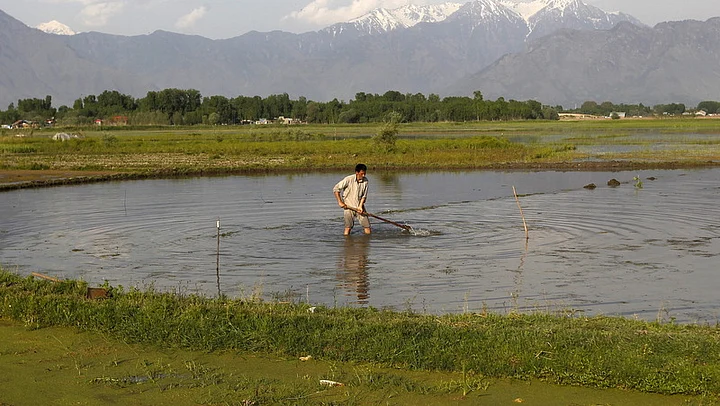Why should a good monsoon matter to the central bank?
To answer that, you need to pretend to be a farmer first.
Now that’s done, you need a product. And what better than a universally-consumed agricultural commodity, say rice?
The business proposition seems simple — you have the land (inherited or leased), you prepare it for cultivation with water and fertilizers, you sow the seeds and you wait for the crop to grow. Once the grains are ready for harvest, you employ people to thresh and dry them (either by hand or by machine). Then you pack the grains in sacks for the market, identify the best price via a middleman, go sell them and make money. Easy!
Reality check. The biggest operational requirement for this investment is not under your control. It is quite literally in God’s hands.
Rain and Inflation
If there is very less rain, or too much rain, you’re ruined. That probably explains why the front pages of newspapers lately talk about the onset of monsoons. If the rains arrive on time, the farmer is able to sell a good product at the right price. This means inflation is kept under check.
Therefore, the central bank need not take any drastic action to help consumers and the economy. No surprises then that shares in India soared recently after the weather office forecast a timely monsoon. Farmers, traders and investors are worried about an El Nino weather pattern this year.
El Nino threatens more heat and drier conditions in Asia, so a positive outlook by the weather department is definitely something to cheer about. It works inversely too — unexpected rains, such as those in some areas in February and March, end up destroying winter-sown crops.
Farming accounts for 15 percent of India’s $2 trillion economy and supports two-thirds of its population, but most of the country’s fields don’t have irrigation facilities. So, farmers rely heavily on rain. A lot of them take loans from banks or other people to buy raw materials.
When the promised returns don’t arrive, the debt-ridden farmer is a frustrated man. In India, such circumstances have increased the number of farmer suicides. That’s another story and we shall not digress.
Anyway, if the farmer ends up with fewer crops, the sale price of his commodities, such as rice, corn or sugar, will increase — thus fueling inflation. The good news for India is that for now inflation risk is reduced because of the improved monsoon forecast and lower oil prices.
Rain, Inflation and the Central Bank
If there’s too much money chasing too few goods (inflation), the consumer will cut back on his purchase. It is the Central Bank’s job to maintain price stability by altering its monetary policies. If prices go up, it becomes a priority for the central bank to try and accelerate the economy.
Lowering interest rates stimulates growth and increases purchasing power of consumers. Raising interest rates slows growth frenzy. An analogy I often make to my trainees is that of a glass of water and the jug. The jug (central bank) cannot keep pouring water (economic stimulation) into the glass (economy) as there is fear of overflowing. The jug’s job is to constantly keep the water level in check, just enough to quench everyone’s thirst.
The RBI (India’s central bank) Governor, Raghuram Rajan, has cut interest rates twice this year to bolster the economy.
The latest figures in India show consumer price inflation eased to 4.87% in April, where just the food price inflation dropped 5.11% from 6.14% in March. Rajan’s target range is between 2 and 6 percent. While inflation has gradually cooled in India — it was in the double digits in 2013 - much depends on domestic demand and, of course, the rain.
Teenomics is a column that demystifies economics for young adults. Kavita Chandran is a Reuters journalist. The views expressed here are her own.
